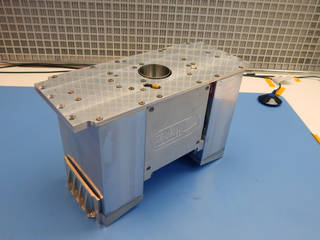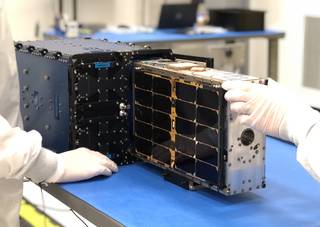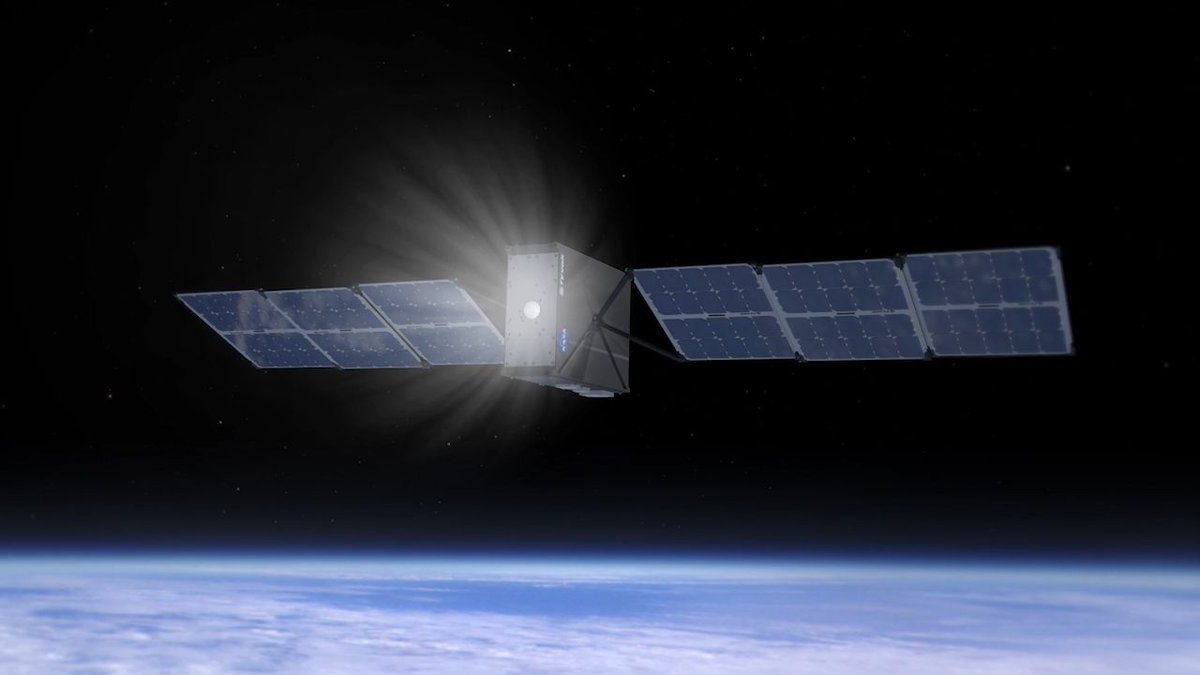Novel propulsion systems for CubeSats have been on an innovative tear of late. UT has reported on propulsion systems that use everything from solid iodine to the Earth’s own magnetic field as a way of moving a small spacecraft. Now there is a potential solution using a much more mundane material for a propellant – water.
Water has plenty of advantages going for it as a propellant. Most obviously, it is not volatile or toxic, making it much easier to handle than conventional rocket fuel. One design flaw holding back the adoption of regular rocket fuel into widespread use in CubeSats is their explosive potential. CubeSats are usually housed next to larger, more expensive satellites in the payloads of rockets. If the rocket fuel loaded into a small CubeSat would ignite unintentionally, it could completely destroy the much larger, more expensive telescope it is sitting next to. So CubeSat designers rightfully shy away from including such a dangerous propellant in their small satellite.

Credit: Tethers Unlimited Inc. / Mason Freedman
Without access to regular rocket fuel, designers are left with much less desirable choices for propellant, such as ion thrusters. Some do not even select a propellant system at all. This lack of ability to controllable navigate space results in defunct CubeSat cluttering up orbital trajectories as well as unintentionally deorbiting in an uncontrolled, and potentially dangerous, descent.
What makes water such a special propellant is that it is completely stable under normal conditions, but it can also be split to create hydrogen and oxygen, two of the main components of normal rocket fuel. This split is accomplished by a process known as electrolysis, which separates that oxygen and hydrogen molecules from the water from one another. Then each individual element can be funneled into a rocket nozzle and exploded to push the craft in a given direction.

Credit: Spaceflight Inc. / Lisa Middlebrook
Electrolysis will actually take place inside the CubeSat in a specialized miniaturized chamber which is the true heart of this propulsion innovation, and was developed by Tethers Unlimited, a start-up based in Washington. Its system, Hydros, could add its name to the growing list of CubeSat propulsion technologies, if it is successfully tested later this year as part of NASA’s Pathfinder Technology Demonstration-1 mission. Given the advantages of its propellant, it has a lot of potential to become a standard propulsion platform for CubeSats for years to come.
Learn More:
NASA: NASA CubeSat to Demonstrate Water-Fueled Moves in Space
Space.com: Water-Powered CubeSat Satellite Shoots for the Moon
AIAA: Electrolysis Propulsion for CubeSat-Scale Spacecraft
Lead Image: Artist’s conception of the Pathfinder Demonstrator-1 satellite that will test the Hydros propulsion system.
Credit: NASA

